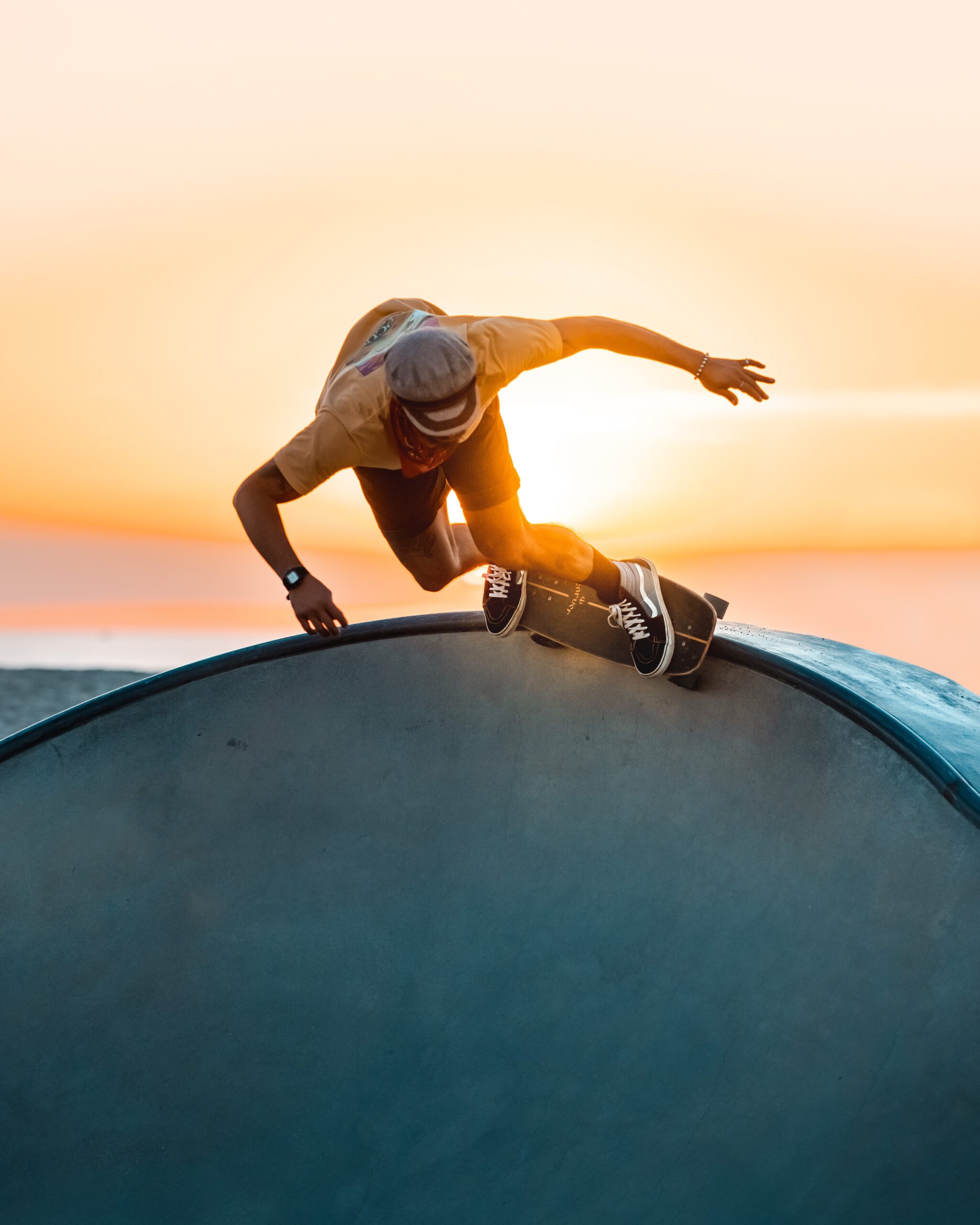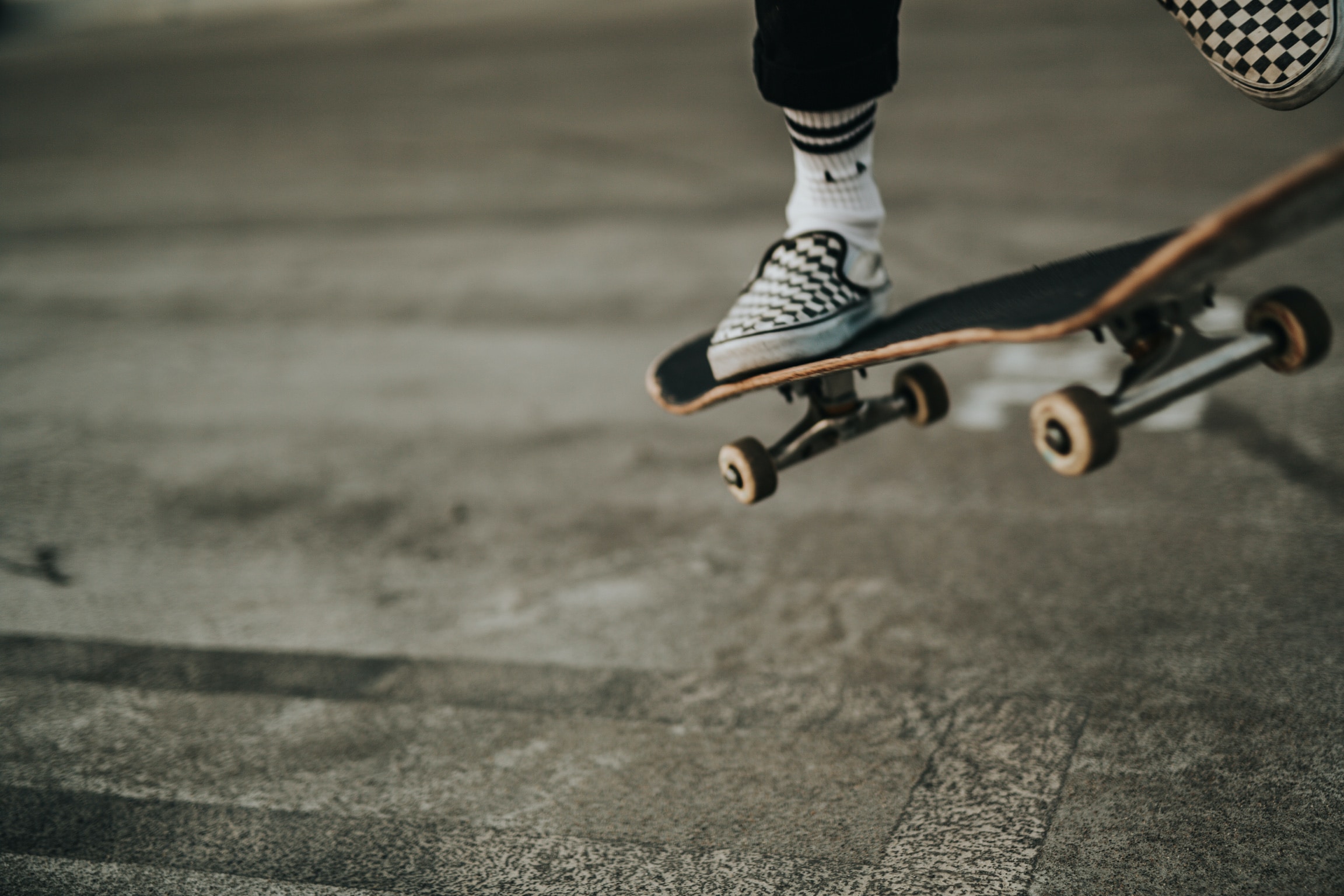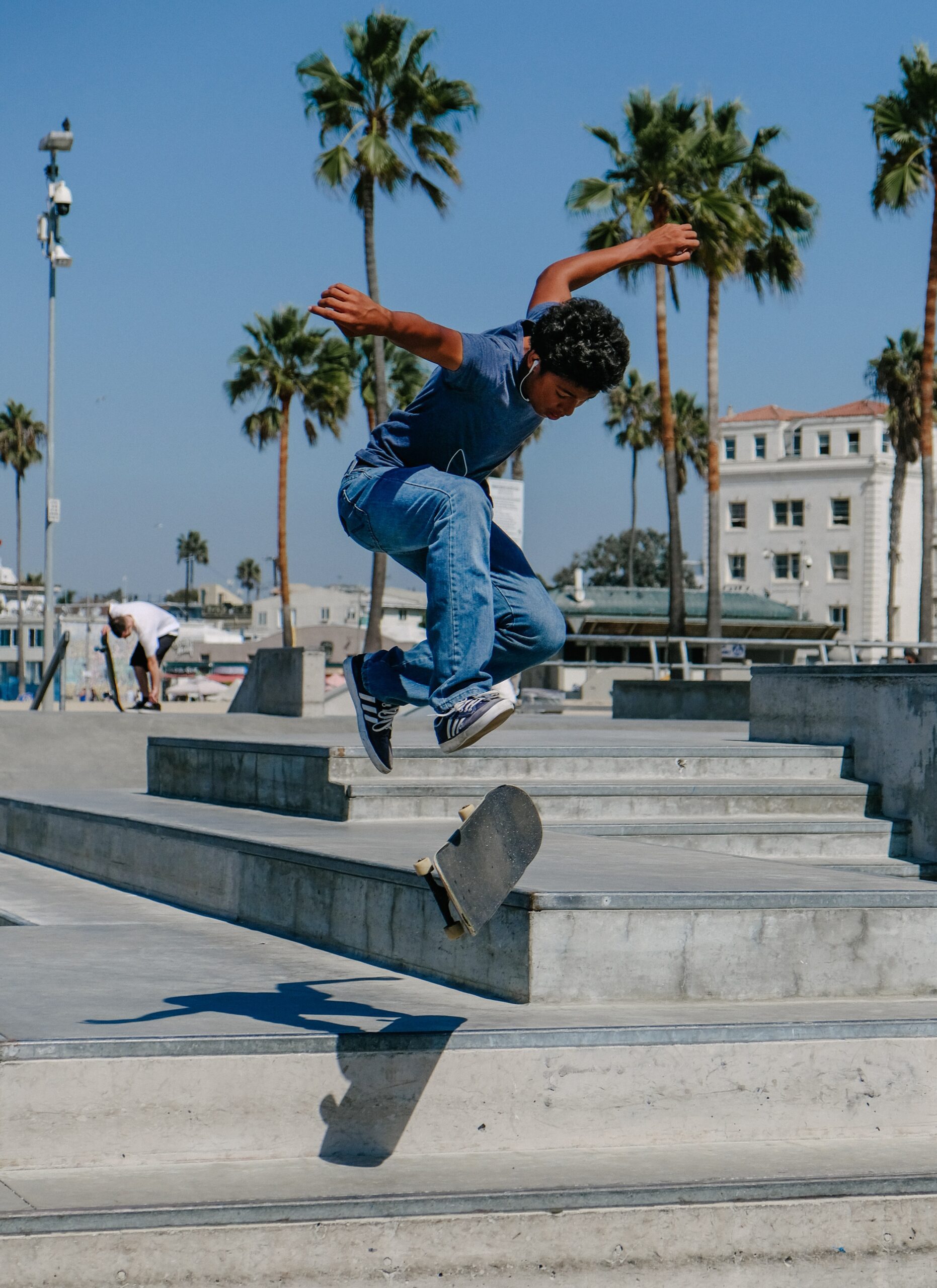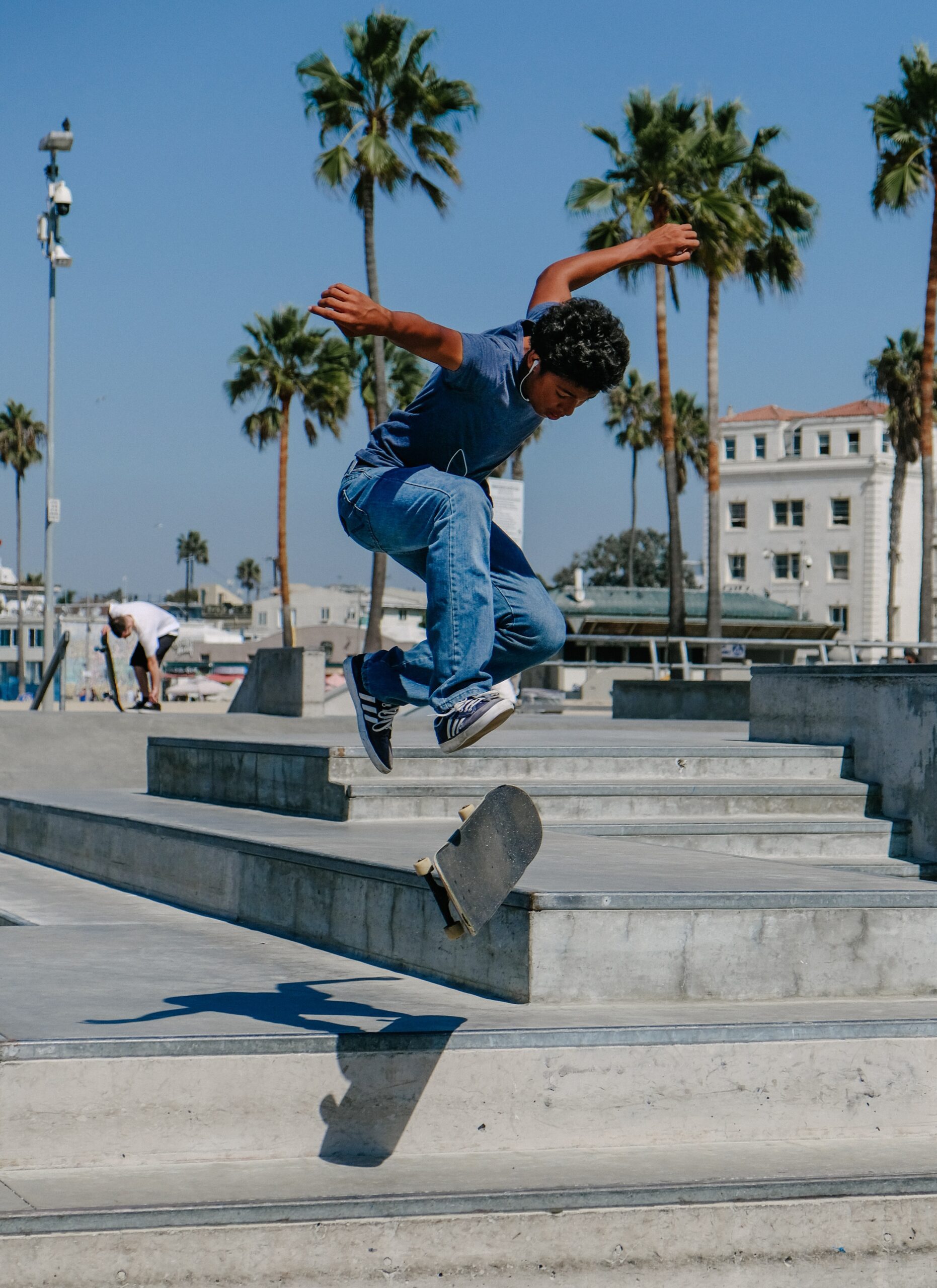Have you ever wondered how to get started with learning to ollie and perform your very first skateboard tricks? It can be an exciting and slightly intimidating endeavor, but fear not! This article will guide you through the process of approaching and mastering the art of ollieing, so you can confidently take your skateboarding skills to new heights. From understanding the basics of foot positioning to practicing the right technique, we’ve got you covered. So grab your skateboard, put on your favorite pair of shoes, and let’s dive into the world of skateboarding tricks together!

Getting Started
So you’ve decided that you want to start skateboarding, and that’s awesome! Skateboarding is a fun and exhilarating activity that allows you to express yourself while challenging your physical and mental capabilities. Before you dive right into performing tricks, it’s important to have the right skateboard and protective gear.
Choosing the Right Skateboard
When choosing a skateboard, there are a few key factors to consider. The first is the size of the board. It’s recommended to start with a skateboard that is suitable for your height and shoe size. A wider board provides more stability, whereas a narrower board allows for quicker turns. Additionally, consider the type of skateboard deck – there are different shapes and materials, such as maple wood or composite materials, each offering a different feel and level of durability.
Next, take a look at the skateboard trucks. These are the metal T-shaped components that attach the wheels to the deck. It’s important to choose trucks that are appropriate for your skateboard size and riding style. The trucks should be properly tightened, yet still allow for smooth turns. Lastly, don’t forget about the wheels and bearings. Softer wheels provide better grip, while harder wheels are more suitable for smooth surfaces. High-quality bearings ensure a smooth ride and efficient speed.
Overall, the right skateboard is essential for your comfort and success in learning tricks. Take your time to research and try out different options before making a decision.
Using Protective Gear
Now that you have your skateboard, it’s important to prioritize your safety and wear protective gear. This includes a helmet, elbow and knee pads, and wrist guards. The helmet is particularly crucial as it protects your head from potential injuries. Make sure the helmet fits properly and securely fastens under your chin. Elbow and knee pads provide extra protection for your joints, while wrist guards help prevent injuries in case of a fall.
Wearing protective gear may not be the coolest look, but it’s far more important to keep yourself safe than to worry about appearances. Don’t neglect this aspect of skateboarding – it could make all the difference in preventing serious injuries and allowing you to confidently progress in your skateboarding journey.
Mastering the Basics
Before diving into tricks and more advanced maneuvers, it’s crucial to master the basics of skateboarding. These fundamental skills will serve as a solid foundation for your future progress. Let’s start with finding your stance.
Finding Your Stance
Finding your stance is all about figuring out which foot goes in front and which goes at the back. Most people have a natural tendency towards either regular or goofy stance. Regular stance means your left foot is at the front, while goofy stance means your right foot is at the front. To determine your stance, try both positions and see which feels more comfortable and natural to you. Keep in mind that your stance can also change as you progress in skateboarding, so stay open to experimenting.
Balancing on the Board
Once you’ve determined your stance, it’s time to work on balancing on the board. Start by standing on the skateboard with your feet shoulder-width apart. Allow your body to relax and find your center of gravity. It’s normal to feel a bit wobbly at first, but with practice, you’ll become more stable.
To improve your balance, practice shifting your weight from your heels to your toes and vice versa. This will help you maintain control and stability while riding the skateboard. Remember to keep your knees slightly bent and your posture relaxed. Balancing is a fundamental skill that will greatly contribute to your ability to perform tricks and maneuvers.
Pushing Off
Now that you’ve found your stance and learned to balance on the board, it’s time to learn how to push off. Pushing off is how you generate forward momentum and propel yourself on the skateboard. To push off, place your back foot on the tail of the skateboard, while your front foot stays near or on the bolts of the front trucks.
Push off the ground with your back foot in a smooth and controlled motion, while simultaneously transferring your weight to your front foot. As you gain momentum, place your back foot on the skateboard and continue pushing off with your front foot. Practice pushing off and maintaining your balance until you feel comfortable and confident. This skill is essential for getting around and preparing to learn more advanced tricks.
Learning to Ollie
Once you have mastered the basics and have a solid foundation on your skateboard, it’s time to progress to learning your first trick – the ollie. The ollie is the foundation for many advanced tricks and is a fundamental skill every skateboarder should learn.
Understanding the Ollie Motion
To understand the ollie motion, it helps to break it down into three main steps: the pop, the slide, and the landing. The pop involves using your back foot to apply pressure to the tail of the skateboard, causing it to hit the ground and create a popping motion. This pop generates the upward momentum needed for the ollie.
After popping the board, the next step is to slide your front foot up the skateboard’s grip tape. This sliding motion levels out the board in mid-air and allows you to control the height and distance of your ollie. The key is to slide your foot towards the nose of the skateboard while simultaneously dragging your toes upwards.
Finally, once the board is level in the air, it’s time to prepare for the landing. Bend your knees slightly and prepare to absorb the impact as you bring the board back down to the ground. Aim for a smooth and controlled landing, keeping your balance and continuing forward.
Perfecting Your Pop
The pop is one of the most crucial aspects of a successful ollie. To perfect your pop, start by practicing the motion without actually jumping or sliding your front foot. Get comfortable with applying pressure to the tail of the skateboard and getting that satisfying pop sound. The more forceful and precise your pop, the higher you will be able to ollie.
Once you’ve mastered the pop motion, start incorporating the slide of your front foot. Remember to slide your foot up towards the nose of the skateboard while dragging your toes upwards. Practice sliding your foot and timing it with the pop to achieve the desired height and control.
Sliding Your Foot
The sliding motion of your front foot is just as important as the pop in the ollie. Aim to slide your foot up the skateboard’s grip tape quickly and smoothly. The faster and more controlled your slide, the better your ollie will be. Experiment with the positioning of your foot and the angle of your slide to find what works best for you.
Continue practicing the ollie motion, focusing on the pop and slide, until you feel comfortable with the movement. Perfecting the ollie is a process that requires persistence, practice, and patience. Keep at it, and soon enough, you’ll be nailing those ollies with confidence.
Performing Your First Tricks
Congratulations, you’ve mastered the ollie! Now it’s time to move on to performing your first tricks. While there are countless tricks you can learn, we’ll start with three beginner-friendly tricks – kickflips, heelflips, and pop shuvits.
Kickflips
The kickflip is a classic skateboarding trick that involves flipping the board 360 degrees along its length axis while in mid-air. To perform a kickflip, start with your front foot placed slightly below the bolts of the front trucks and your back foot on the tail.
Pop the board with your back foot, similar to the ollie motion, but this time, flick your front foot sideways towards the edge of the skateboard. The flick should be swift and powerful, causing the board to spin 360 degrees. Once the board completes a full rotation, aim to catch it with your back foot and land smoothly.
Heelflips
The heelflip is similar to the kickflip but involves flipping the board using the heel side of your front foot. Start with the same foot positioning as the kickflip – front foot slightly below the bolts of the front trucks and back foot on the tail.
Pop the board with your back foot, just like in an ollie, but this time, use the heel side of your front foot to flick the board in a sideways motion. The flick should be forceful and aimed towards the edge of the skateboard, causing it to flip 360 degrees. Catch the board with your back foot and land smoothly to complete the heelflip.
Pop Shuvits
The pop shuvit is a trick that involves spinning the skateboard 180 degrees on its vertical axis while in mid-air. To perform a pop shuvit, start with your front foot placed slightly below the bolts of the front trucks and your back foot on the tail.
Pop the board with your back foot, similar to an ollie, but this time, use your back foot to kick the skateboard in a sweeping motion to the side. The board should rotate 180 degrees. As the board completes the rotation, aim to catch it with your back foot and land smoothly.

Building Confidence
Building confidence is an ongoing process in skateboarding. As you learn and progress, it’s important to focus on building your confidence both on and off the board. Here are some tips to help you along the way.
Practicing Regularly
Consistency is key when it comes to improving at skateboarding. Make an effort to practice regularly, even if it’s just for a short period of time each day. Set aside dedicated skateboarding sessions and approach them with enthusiasm and a positive mindset. The more you practice, the more comfortable and confident you’ll become on your skateboard.
Setting Achievable Goals
Setting achievable goals is a great way to build confidence in skateboarding. Start by setting small goals that are within your reach. For example, aim to land five ollies in a row or successfully perform a kickflip consistently. As you accomplish these goals, gradually set bigger and more challenging ones. Celebrate your progress along the way, and remember to be patient with yourself. Building confidence takes time, and every small achievement adds up.
Taking Small Steps
Skateboarding is all about progression, but it’s important to take small steps and not rush the process. Start with the basics, master them, and then gradually progress to more advanced tricks. Focus on consistently improving your skills rather than trying to tackle everything at once. By taking small steps and building a solid foundation, you’ll be well-equipped to handle more complex tricks and maneuvers.
Troubleshooting and Tips
As you progress in skateboarding, you may encounter some challenges along the way. Here are a few tips to help troubleshoot common issues and overcome obstacles.
Common Mistakes to Avoid
It’s natural to make mistakes when learning new tricks or perfecting your skills. One common mistake is not committing fully to the trick or maneuver. Confidence and commitment are key – believe in yourself and go for it! Another mistake is not practicing consistently. Regular practice is essential for improvement, so make sure to schedule dedicated skateboarding sessions and stick to them.
Getting Over Fear
Fear is a common hurdle in skateboarding, and it’s important to address it. Start by understanding that fear is normal and a part of the learning process. Take baby steps and gradually push yourself out of your comfort zone. Visualize yourself successfully performing the trick before attempting it, and remind yourself of your progress and capabilities. Remember, fear can be overcome with practice, patience, and positive thinking.
Seeking Guidance from Experienced Skaters
Skateboarding is a community, and experienced skaters are often willing to provide guidance and support. If you’re struggling with a particular trick or having trouble progressing, don’t hesitate to reach out to someone with more experience. Seek advice, ask for tips, or even consider taking lessons from a skateboarding instructor. Learning from others who have gone through similar challenges can be incredibly valuable in your skateboarding journey.
In conclusion, learning to skateboard and perform tricks requires patience, practice, and a positive mindset. Start by choosing the right skateboard and wearing protective gear to ensure your safety. Master the basics of finding your stance, balancing on the board, and pushing off. From there, progress to learning the ollie and using it as a foundation for more advanced tricks. As you build confidence, remember to practice regularly, set achievable goals, and take small steps. Troubleshoot common mistakes, conquer fear, and seek guidance from experienced skaters. Most importantly, enjoy the process, have fun, and embrace the joy of skateboarding!


